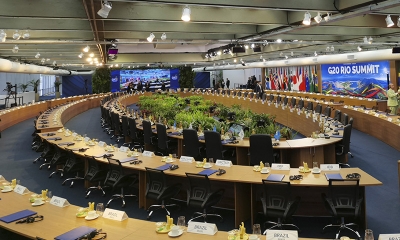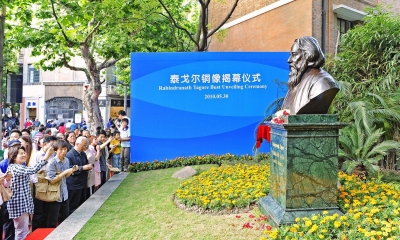China’s Space Program Is Beneficial to All
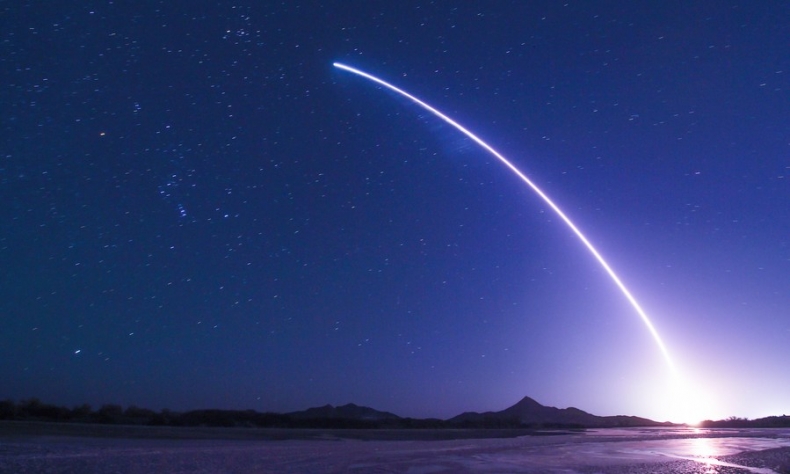
Space belongs to all mankind. Space exploration is the common dream of mankind. It should not and cannot exclude anyone.
The manned space project is currently the most complex and difficult project in the world’s technology sector. The strength of this sector is a reflection of the strength of a country’s scientific research and national economy.
It may sound strange today, but as recently as 1900, China had no modern science and technology at all. However, on November 20, 1999, China’s first experimental unmanned spacecraft “Shenzhou” blasted into space from the Jiuquan Satellite Launch Center in northwest China’s Gansu Province, marking a turning point in China’s space history. It is worth noting that former President Jiang Zemin who passed away on November 30, 2022, named the country’s first spacecraft “Shenzhou” and personally wrote the calligraphy for the two Chinese characters painted on its side.
Then four years later, on October 15, 2003, 38-year-old Yang Liwei became China’s first astronaut, realizing the millennium dream of flying in space for the Chinese nation. China became the third country after the United States and Russia to put a human into space using its own resources.
Since then, China’s manned space program has had a history of one success after another, with the latest addition being the successful launch of the manned spaceship “Shenzhou-15” amid intensifying technological competition for supremacy in the space arena.
China’s notable feats in space industry recently included launching satellites, sending humans to space, the BeiDou Navigation Satellite System, the Zhurong rover probing Mars, the Chang’e probes flying to the moon, the Xihe satellite chasing the sun and the China Space Station traveling among the stars – all these have attracted worldwide attention while creating a legacy 1.4 billion Chinese people should be proud of.
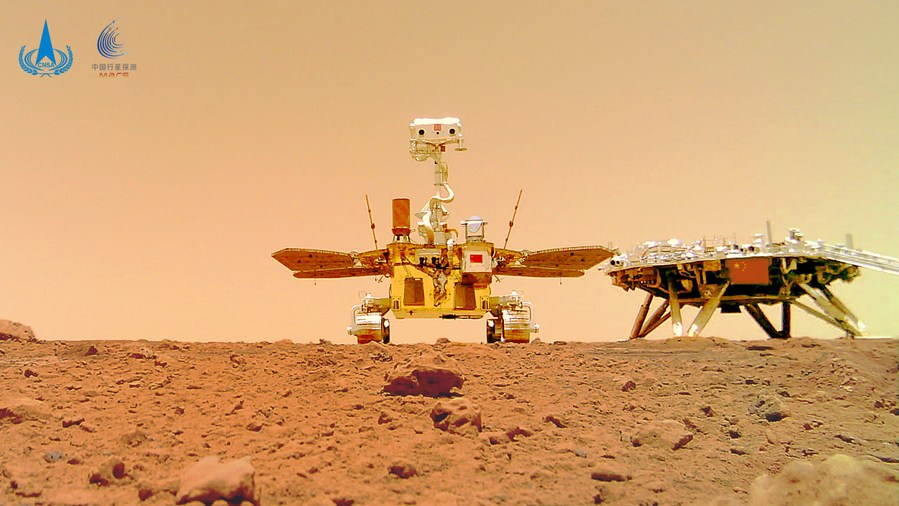
Realizing Chinese Dream in space
The conquest of space has been a long-term dream for China. The building of the three-module Tiangong or “Heavenly Palace” space station is one of the crown jewels of China’s space program. Chinese President Xi Jinping said during a video call with the astronauts on the Shenzhou-10 manned space mission on June 24, 2013, “The space dream is part of the dream to make China stronger. With the development of space programs, the Chinese people will take bigger strides to explore further into space.”
In the past ten years, President Xi has been paying great attention to the development of China’s space program. He has visited satellite launch centers several times, encouraging scientists, astronauts and space scientists and engineers to make unremitting efforts to build China into a space power.
It has been three decades since China’s manned space program was officially kickstarted in 1992. By the end of 2022, as previously planned, China will complete the construction of the Tiangong space station. On November 29, 2022, China launched its Shenzhou-15 manned spacecraft carrying three astronauts from Jiuquan Satellite Launch Center. It is a landmark moment in China’s space ambitions, which strongly signals China is now an equal player in space with major space-faring powers like the United States and Russia.
The six-month mission is the sixth flight mission of China’s manned spaceflight program this year and the last in the construction phase of Tiangong space station, which will weigh about 100 tons with three modules and three spacecraft once completed. At a press conference on November 28, Ji Qiming, assistant to the China Manned Space Agency (CMSA) director, unveiled the details of the Shenzhou-15 mission, saying that the Shenzhou-15 trio will unlock, install and test 15 scientific experiment cabinets, and carry out more than 40 experiments and testing in the fields of space science research and application, space medicine and space technology.
On November 30, the whole world witnessed the historic moment when the Shenzhou-14 crew on board welcomed the three astronauts of the Shenzhou-15 mission, the first time six astronauts were seen in-orbit at the China Space Station (CSS). Notably, the Shenzhou-14 carrying three astronauts was sent to the space station on June 5 this year. After handing over the control of the space station to the Shenzhou-15 crew, the Shenzhou-14 astronaut trio returned to Earth at the Dongfeng landing site in north China’s Inner Mongolia Autonomous Region on the night of December 4, 2022.
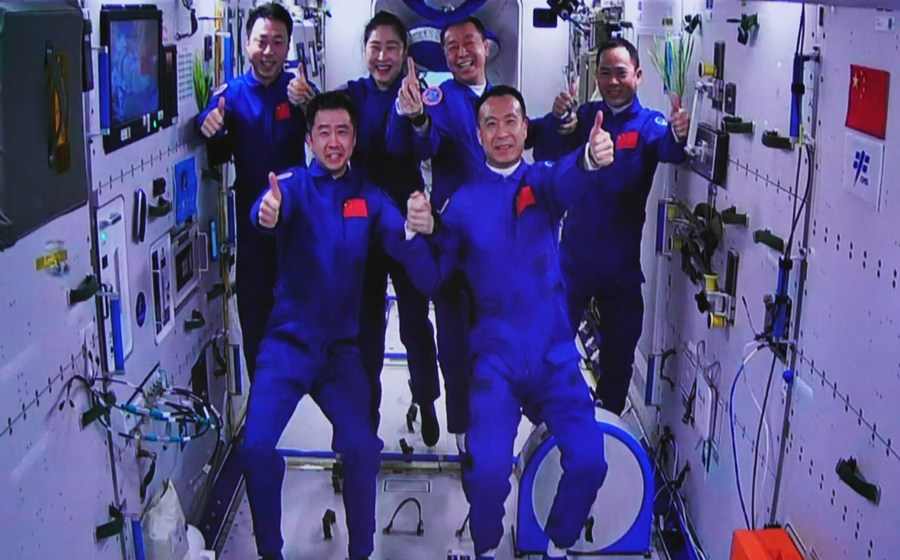
The group photo of the six Chinese astronauts gave the message to the whole world that space exploration is not an exclusive subject of the United States or some Western countries which have long monopolized space technology, leaving developing countries almost no opportunities in the field.
Undoubtedly, China’s space program is a symbol of a major country and a boost to the modernization of its national defense. In other words, the Shenzhou-15 spaceflight mission is a boost to the confidence of the Chinese people, igniting patriotism and positive energy. With the successful launch of the Shenzhou-15 manned spacecraft, the Chinese people are realizing the final goal of China’s “three-step” human space program initiated 30 years ago. So far, China has sent 16 astronauts into space including two female astronauts – Liu Yang and Wang Yaping.
China’s space program is open to the world
China, as the world’s second-largest economy, has been making its own contributions in the space field. China has ensured that space remains peaceful and clean, and guaranteed that its space activities benefit humanity. As President Xi Jinping noted in his congratulatory letter to the United Nations/China Global Partnership Workshop on Space Exploration and Innovation on November 21, 2022, “China is willing to work with all countries to strengthen exchanges and cooperation to jointly explore the mysteries of the universe, make peaceful use of the outer space, and promote space technology to better benefit people around the world.”
China’s Space Station is the first project in history open to all UN member states. Currently, nine projects from 17 countries including Switzerland, Poland, Germany and Italy etc. have been selected into the first batch of scientific experiment projects in China space station. China is actively carrying out preparatory work in coordination with relevant parties to train foreign astronauts to fly aboard the nation’s Tiangong space station. It is a witness to China’s relentless efforts to build a community of shared future for mankind in the space sector. More importantly, construction of China’s space station becomes even more significant as the aging ISS could be retired as early as 2024 or possibly in 2028.
China always advocates the peaceful use of outer space, opposes the weaponization of an arms race in outer space, and calls for the building of a community with a shared future in outer space. The main goal of China’s space exploration is to benefit the people of the world.
For example, in October 2022, when Hurricane Julia hit Venezuela, Colombia, Costa Rica, El Salvador, Nicaragua, Panama and other developing countries, Chinese satellites provided strong assistance to the disaster response of those countries.
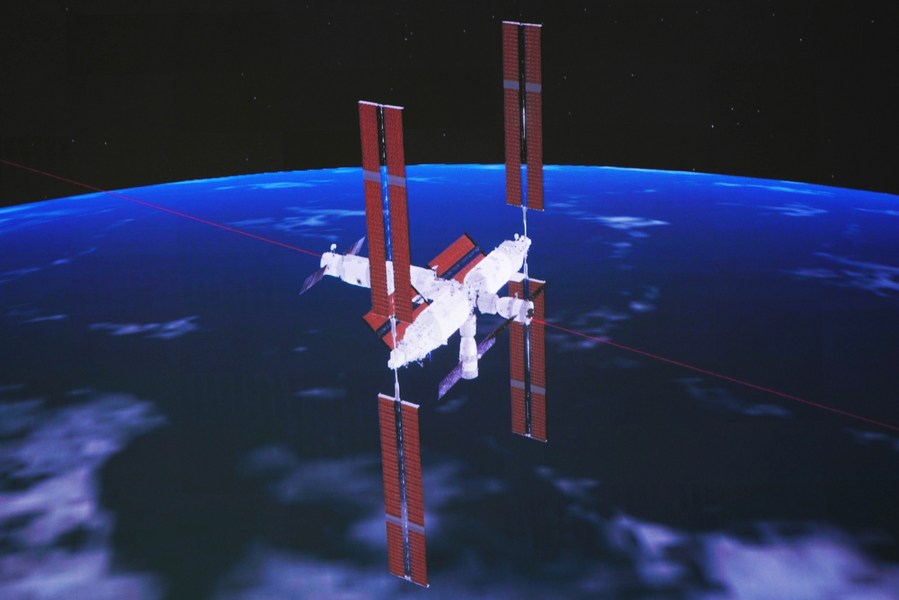
Polarization of space activity by the United States
But unfortunately, the United States and its Western allies have long barred China from the international space station club due to their polarization of space activity along their geopolitical lines. The U.S. Congress passed a law in 2011 prohibiting NASA from engaging in bilateral space partnerships with China.
NASA’s administrator Bill Nelson has recently made many comments that are offensive to China. He told German newspaper The Bild in July, saying that “China’s space program is a military one,” “Beijing was learning how to destroy satellites launched by other countries” and “China might take over the moon.” Nielsen’s claim that China’s space program is a “military” threat is even more nonsense. The truth is quite the opposite.
Indeed, the United States pioneered the militarization of space. From the Cold War era to the present, the U.S. military has conducted frequent space exercises and continued to assert its space hegemony based on its technological advantages. In recent years, the U.S. has openly defined outer space as a combat domain, accelerated the formation of the outer space force, developed and deployed offensive outer space weapons, and has long passively resisted the negotiation of legal documents on outer space control, and continuously strengthened the outer space military cooperation with its allies.
The U.S. satellites have acted recklessly in space not following guidelines regarding space activities. The Geosynchronous Space Situational Awareness Program (GSSAP) series of satellites under the U.S. military have come illegally close to Chinese and Russian communications satellites several times in the past five years. In July and October 2021, the U.S. Starlink satellites launched by SpaceX twice came close to the Chinese Space Station carrying astronauts.
Space belongs to all mankind. Space exploration is the common dream of mankind. It should not and cannot exclude anyone. The mission of space exploration should benefit all. China has been doing the same. It will be worth expecting that in the near future, the Chinese space station will be the “new home” of space exploration for mankind.
The article reflects the author’s opinions, and not necessarily the views of China Focus.
 Facebook
Facebook
 Twitter
Twitter
 Linkedin
Linkedin
 Google +
Google +






